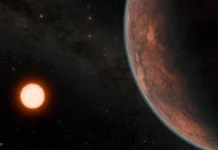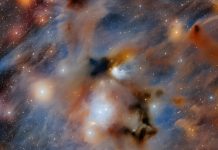
An international team of astronomers using the NASA/ESA/CSA James Webb Space Telescope has discovered the most distant black hole merger ever observed.
This groundbreaking find dates back to when the universe was only 740 million years old, marking the earliest detection of a black hole merger.
Supermassive black holes, with masses millions to billions of times that of the sun, are found in most massive galaxies, including our Milky Way.
These black holes significantly influence the evolution of their host galaxies. However, scientists are still trying to understand how these black holes grew so massive so quickly.
The discovery of enormous black holes in the first billion years after the Big Bang suggests rapid early growth. The James Webb Space Telescope is now providing new insights into this early growth process.
The Webb Telescope detected evidence of two merging galaxies and their massive black holes in a system called ZS7.
This research, published in the Monthly Notices of the Royal Astronomical Society, reveals that one of the black holes has a mass 50 million times that of the sun. The other black hole is similar in mass but is harder to measure due to dense surrounding gas.
Lead author Hannah Übler from the University of Cambridge explained, “We found evidence for very dense gas with fast motions near the black hole, as well as hot and highly ionized gas illuminated by the energetic radiation produced during black hole accretion.”
Webb’s advanced imaging allowed the team to distinguish the two black holes spatially.
The findings suggest that merging is a crucial way for black holes to grow rapidly, even at the dawn of the universe. Übler noted, “Our results show that massive black holes have been shaping the evolution of galaxies from the very beginning.”
Team member Pablo G. Pérez-González from the Centro de Astrobiología in Spain compared the stellar mass of ZS7 to that of the Large Magellanic Cloud, a neighboring galaxy.
He noted, “We can imagine how merging galaxies’ evolution could be affected if each had a supermassive black hole as large as the one in the Milky Way.”
The merging black holes will eventually generate gravitational waves, detectable by future observatories like the Laser Interferometer Space Antenna (LISA) mission, recently approved by the European Space Agency.
LISA Lead Project Scientist Nora Luetzgendorf from the European Space Agency highlighted that Webb’s results suggest lighter systems detectable by LISA are more common than previously thought. “It will most likely make us adjust our models for LISA rates in this mass range. This is just the tip of the iceberg.”
The team’s discovery is part of the Galaxy Assembly with NIRSpec Integral Field Spectroscopy program.
They have been awarded a new Large Program in Webb’s Cycle 3 observations to study the relationship between massive black holes and their host galaxies in the universe’s first billion years.
This research will systematically search for and characterize black hole mergers, determining their early growth role and the production rate of gravitational waves from the dawn of time.



